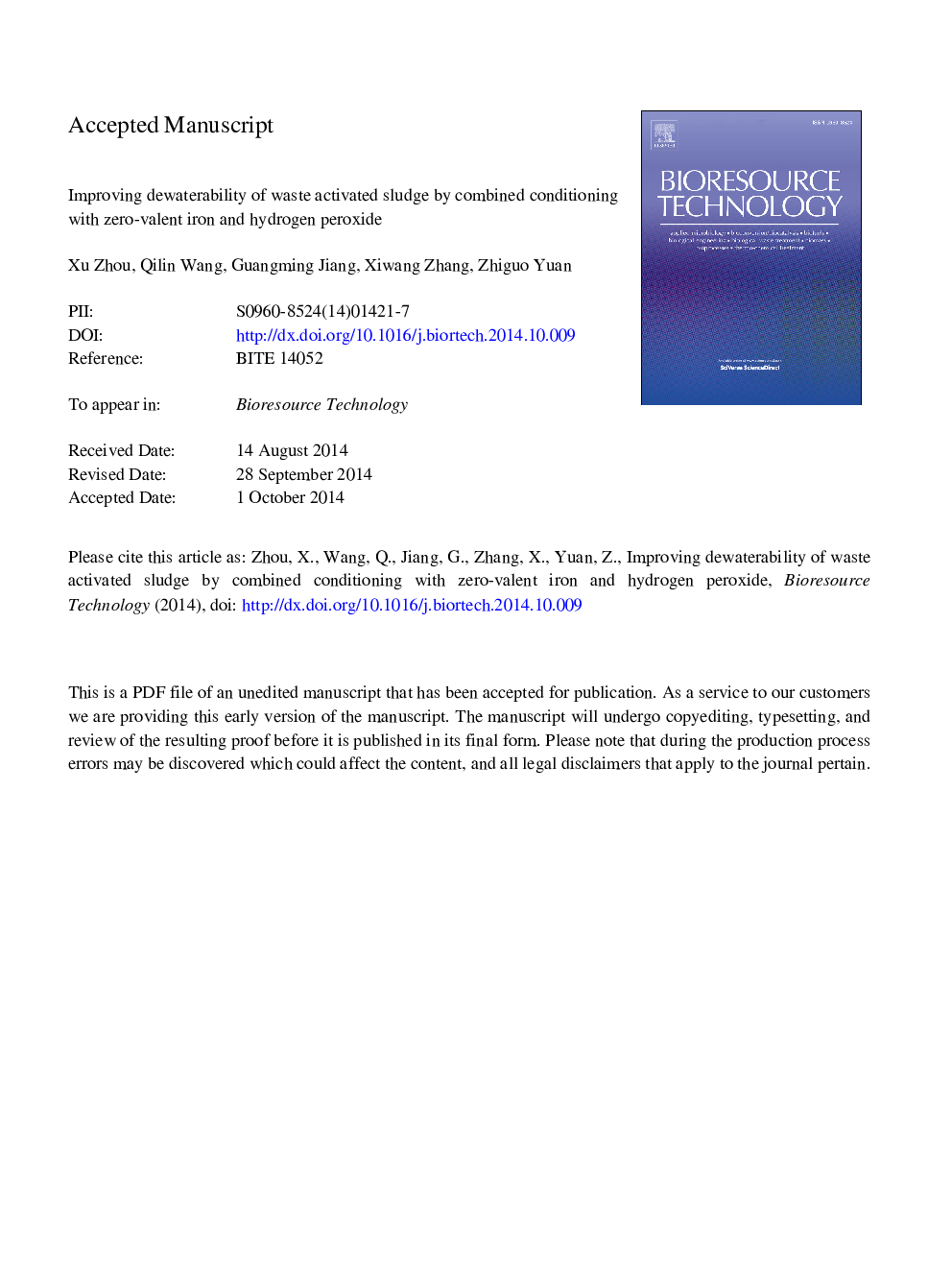| Article ID | Journal | Published Year | Pages | File Type |
|---|---|---|---|---|
| 7075760 | Bioresource Technology | 2014 | 21 Pages |
Abstract
Improvement of sludge dewaterability is crucial for reducing the costs of sludge disposal in wastewater treatment plants. This study presents a novel method based on combined conditioning with zero-valent iron (ZVI) and hydrogen peroxide (HP) at pH 2.0 to improve dewaterability of a full-scale waste activated sludge (WAS). The combination of ZVI (0-750Â mg/L) and HP (0-750Â mg/L) at pH 2.0 substantially improved the WAS dewaterability due to Fenton-like reactions. The highest improvement in WAS dewaterability was attained at 500Â mg ZVI/L and 250Â mg HP/L, when the capillary suction time of the WAS was reduced by approximately 50%. Particle size distribution indicated that the sludge flocs were decomposed after conditioning. Economic analysis showed that combined conditioning with ZVI and HP was a more economically favorable method for improving WAS dewaterability than the classical Fenton reaction based method initiated by ferrous salts and HP.
Related Topics
Physical Sciences and Engineering
Chemical Engineering
Process Chemistry and Technology
Authors
Xu Zhou, Qilin Wang, Guangming Jiang, Xiwang Zhang, Zhiguo Yuan,
